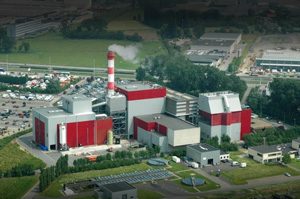Belgium
2023
- Type : Project
- Size : Local community
- Area : Industrial, Residential
Environmental benefit
Waste to Energy Plant in Antwerp, Antwerp
Share
Belgium
2023
- Type : Project
- Size : Local community
- Area : Industrial, Residential
Environmental benefit
Discover this use case online

ISVAG’s location, close to the city of Antwerp, Belgium, drove the company to plan the construction of a new waste-to-energy plant where the focus will be on maximising energy efficiency by additionally recovering heat for a district heating network. The incineration of the residual household waste takes place in a grate furnace.
Different studies were carried out related to the recovery of residual heat (feasibility study small scale district heating grid, feasibility study large scale district heating network, design heat recovery in the existing plant, design new waste-to-energy plant). The first step to this project is the construction of a small scale district heating network, which will be powered with heat from the existing waste-to-heat plant, while the large scale district heating network and brand new plant are foreseen to be taken into operation in 2023.
ISVAG’s role in the SO WHAT project is multiple, considering that they have already an incineration plant running and they are planning the construction of a new one in parallel to a district heating network.
 R-ACES has received funding from the European Union’s Horizon 2020 research and innovation programme under grant agreement N° 892429
R-ACES has received funding from the European Union’s Horizon 2020 research and innovation programme under grant agreement N° 892429
ISVAG’s location, close to the city of Antwerp, Belgium, drove the company to plan the construction of a new waste-to-energy plant where the focus will be on maximising energy efficiency by additionally recovering heat for a district heating network. The incineration of the residual household waste takes place in a grate furnace.
Different studies were carried out related to the recovery of residual heat (feasibility study small scale district heating grid, feasibility study large scale district heating network, design heat recovery in the existing plant, design new waste-to-energy plant). The first step to this project is the construction of a small scale district heating network, which will be powered with heat from the existing waste-to-heat plant, while the large scale district heating network and brand new plant are foreseen to be taken into operation in 2023.
ISVAG’s role in the SO WHAT project is multiple, considering that they have already an incineration plant running and they are planning the construction of a new one in parallel to a district heating network.
